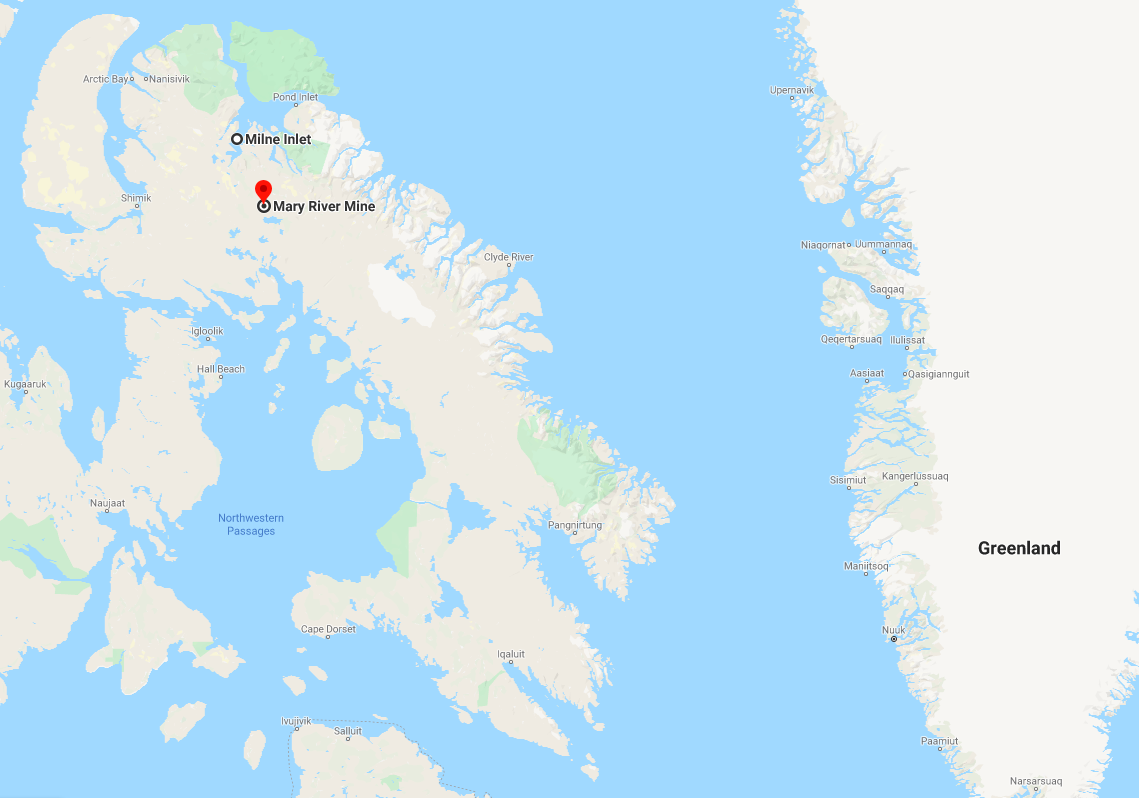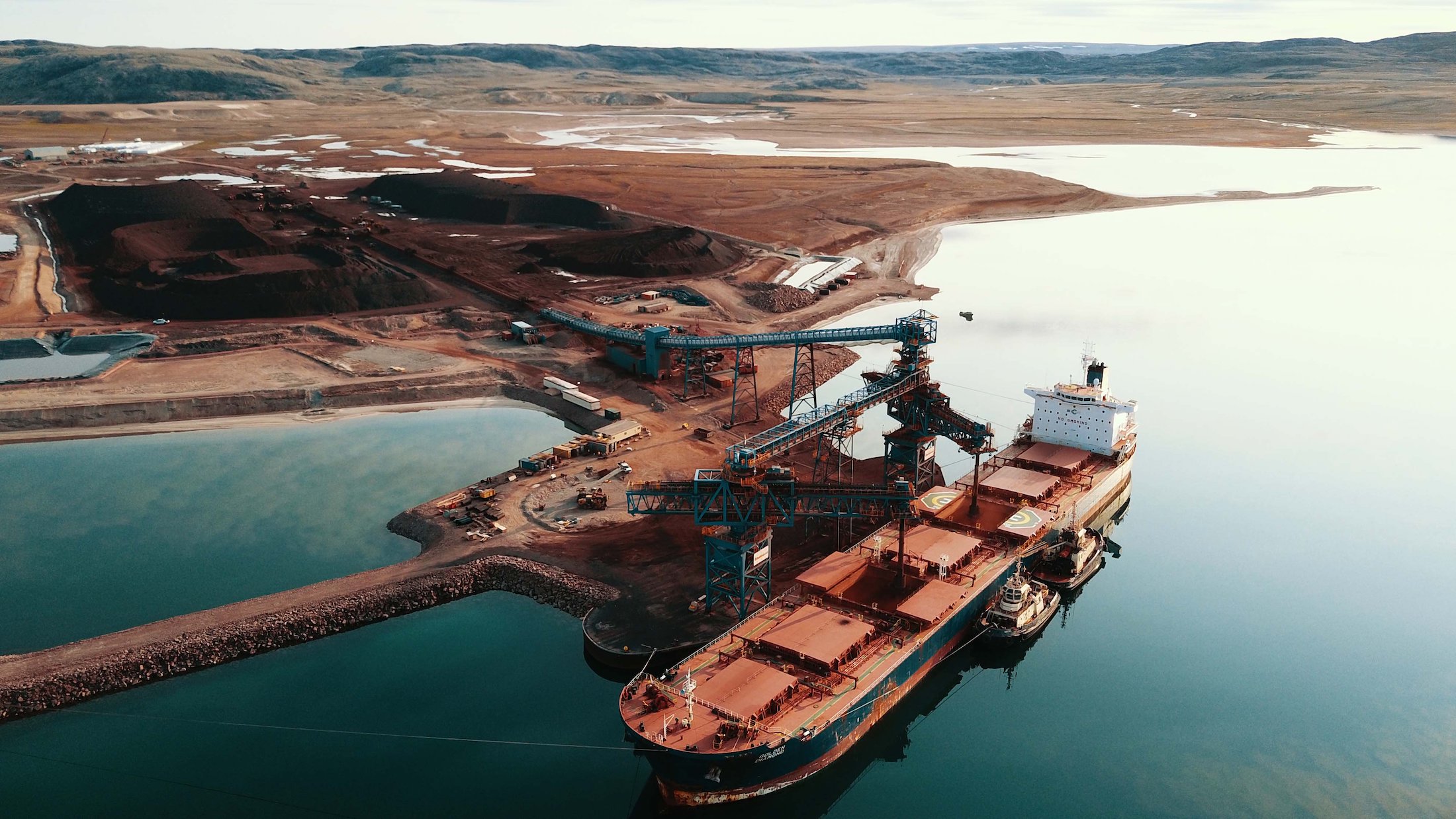
The root of the problem in northern Ontario
This story about a lawsuit involving First Nations in northern Ontario has deep roots — in...
If there’s scientific evidence backing up claims that barren-ground caribou won’t be impacted by a proposed mine expansion on Baffin Island, the mayor of Clyde River, Nunavut, has yet to see it.
Jerry Natanine told The Narwhal an absence of available data is stoking concern that increasing the size of one of the world’s northernmost mines could come at a serious cost to the environment and Inuit culture.
“We just want to hear what the scientists think and there’s been no one to answer,” he said.
Baffinland Iron Mines wants to double iron ore production at its Mary River Mine on north Baffin Island under a second phase of development, which is currently being assessed by the Nunavut Impact Review Board. Part of the expansion project involves building a railway to move that ore from mine to port, replacing a supply road.
The mine site is near traditional caribou hunting grounds that residents from Clyde River often use, Natanine said.
“We go caribou hunting there, and if they build that railroad, we’re thinking it’s gonna block migrations,” he said.

A hauler truck carries iron ore at the Mary River Mine on Baffin Island. Baffinland Iron Mines wants to double its production at the mine, which has community leaders worried about the potential effects on the land and local Indigenous culture. Photo: Baffinland
Natanine said that railway could affect the caribou’s migratory patterns and, as a result, subsistence harvesting. This is why having access to the science behind the project is so important, he added.
Yet, in an Oct. 29 letter to Premier Joe Savikataaq, Natanine states that the Government of Nunavut has “repeatedly refused” to provide information showing potential effects on caribou and whether government scientists agree with the mining company’s assertion that impacts will be “not significant.”
“This is unacceptable,” Natanine wrote in the letter. “For proper consultation and public engagement to occur, the government needs to make public all available information about potential effects on our environment and wildlife.”
“Apparently, the [government] has decided that the speculative benefits of the Mary River mine … somehow outweigh any possible negative effects on the ecology and hunting economy that already provide important economic and cultural benefits to our region.”
A spokesperson with the Government of Nunavut declined to comment in an email to The Narwhal, adding that “it wouldn’t be fair to provide a media statement before the courtesy of responding to Mr. Natanine directly.”
Baffinland is permitted to ship six million tonnes of iron ore from its port on Milne Inlet, just west of the community of Pond Inlet. The company wants to increase production by up to 12 million tonnes of iron ore per year. The company states that moving that amount of ore requires a 110-kilometre railway.
Natanine worries caribou could be scared off by the new railway or, worse, hit by locomotives. He said the new tracks could encroach on caribou habitat and be difficult for herds to cross.
“Caribou make trails and they always use the same trails over and over again every year,” Natanine said. “Traditionally, we’re not allowed to walk on that [trail] or do anything to it because the caribou are very sensitive to that.”
“What the mine is proposing to do is build a railway on these trails for caribou. We are questioning [the government] to see what their biologists … think about that.”

Mary River Mine, on Baffin Island, Nunavut. A proposed railway expansion for the mine would be built over traditional caribou trails. Map: Google Maps
“The benefit of employment is something that we value, but, really, the bottom line is that we want to protect our way of life, our hunting culture.”
A survey conducted by the Government of Nunavut in 2014 estimated a population of 4,652 caribou on Baffin Island, which “confirmed a major decline of caribou” on the island compared to estimates taken in the 1990s.
The survey results, along with local observations, spurred an eight-month moratorium on harvesting. In 2015, a harvesting cap of 250 male caribou per year was implemented, which remains to this day.
Since then, caribou numbers on the island have improved, according to a 2019 government report. In 2019, 1,584 caribou were counted in southern Baffin Island compared to 346 caribou in 2014.

The Mary River Mine’s port on Milne Inlet on north Baffin Island. The island has a caribou population of 4,652, which is already a major decline compared to population estimates from the 1990s. Photo: Baffinland
Natanine wants the caribou to remain in good shape. The expansion project could conflict with that, he added.
“We’re not really sure what’s gonna happen.”
With mitigations in place such as adjusted speed limits, seasonal traffic limits on the railway and regular monitoring of caribou near the project, “caribou are not expected to be affected at the population level,” Megan Lord-Hoyle, vice-president of sustainable development for Baffinland, said in an email to The Narwhal.

Baffinland’s Mary River mine port facility in Milne Inlet. Community leaders say that certain mitigation efforts, such as speed limits and caribou monitoring, would protect the caribou population. Photo: Oceans North
During the review process, she said the company made additional commitments to protect caribou in response to concerns raised by Inuit, the Government of Nunavut and the Qikiqtani Inuit Association (the landlord of the Qikiqtaaluk Region, which allows Baffinland to operate there through a commercial lease).
These commitments include caribou research and data sharing between the company and the Government of Nunavut to “support regional caribou monitoring,” adjusting the railway design to make embankments gentler and working with Inuit and regulators, like the Nunavut Impact Review Board, to make it easier for caribou to cross the railway once built, Lord-Hoyle said.
The Inuit Certainty Agreement, a benefits-sharing and environmental assurance agreement co-signed by the Qikiqtani Inuit Association and Baffinland, is a means for Inuit to be more involved in adaptive management processes “by giving them direct approval authority over monitoring indicators, thresholds of acceptable change and predetermined responses,” she said.
Content for Apple News or Article only Get the inside scoop on The Narwhal’s environment and climate reporting by signing up for our free newsletter. This...
Continue reading
This story about a lawsuit involving First Nations in northern Ontario has deep roots — in...

At a crucial point in their research, biologists are scrambling to find new support for...

From True Detective to The Grizzlies, the Inuk actor is known for badass roles. She's...

